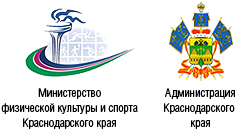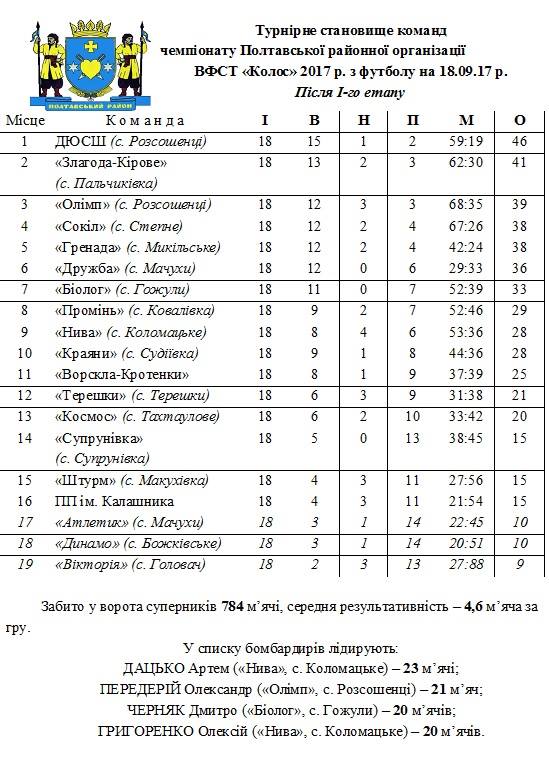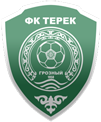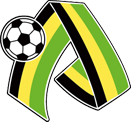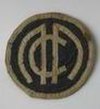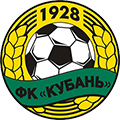Синицын, Борис Алексеевич. Синицын борис алексеевич футбол
 |  Belshina II Belshina II | 12/13 (06 нояб. 2012 г.) | 13/14 (31 дек. 2013 г.) | Тренер | - | - |
 |  Сахалин Сахалин | 11/12 (01 февр. 2012 г.) | 11/12 (28 мая 2012 г.) | И.о. тренера | - | - |
 |  Уфа Уфа | 09/10 (17 июня 2010 г.) | 10/11 (15 окт. 2010 г.) | Тренер | - | - |
 |  Sochi-04 Sochi-04 | 07/08 (16 июля 2007 г.) | 08/09 (22 июля 2008 г.) | Тренер | - | - |
 |  Torpedo Volzhsky Torpedo Volzhsky | 06/07 (13 дек. 2006 г.) | 07/08 (02 июля 2007 г.) | Тренер | - | - |
 |  | 05/06 (28 нояб. 2005 г.) | 05/06 (13 июня 2006 г.) | Тренер | - | - |
 |  Zenit Chelyabinsk Zenit Chelyabinsk | 04/05 (01 февр. 2005 г.) | 05/06 (18 авг. 2005 г.) | Тренер | - | - |
 |  Вентспилс Вентспилс | 98/99 (01 янв. 1999 г.) | 00/01 (31 июля 2000 г.) | Тренер | 4 | 1,00 |
 |  Нефтехимик Нефтехимик | 97/98 (02 июня 1998 г.) | 98/99 (31 дек. 1998 г.) | Тренер | - | - |
 |  Zvezda Irkutsk Zvezda Irkutsk | 97/98 | 97/98 | Тренер | - | - |
 |  Спартак Нч Спартак Нч | 94/95 | 94/95 | Тренер | - | - |
 |  FK Obninsk FK Obninsk | 90/91 | 92/93 | Тренер | - | - |
www.transfermarkt.ru
Синицын, Борис Алексеевич — Википедия
Материал из Википедии — свободной энциклопедии
Текущая версия страницы пока не проверялась опытными участниками и может значительно отличаться от версии, проверенной 17 марта 2018; проверки требует 1 правка.
 Текущая версия страницы пока не проверялась опытными участниками и может значительно отличаться от версии, проверенной 17 марта 2018; проверки требует 1 правка. В Википедии есть статьи о других людях с такой фамилией, см. Синицын.
Текущая версия страницы пока не проверялась опытными участниками и может значительно отличаться от версии, проверенной 17 марта 2018; проверки требует 1 правка. В Википедии есть статьи о других людях с такой фамилией, см. Синицын. Борис Алексеевич Синицын (11 августа 1953, Бородино, Одесская область) — советский футболист, защитник, российский футбольный тренер. Заслуженный работник физической культуры Кабардино-Балкарии, заслуженный тренер Башкортостана.
На детско-юношеском уровне выступал за одесский «Черноморец», кировоградскую «Звезду» и ленинградский «Зенит». Во взрослом футболе дебютировал в середине 1970-х годов в ленинградском «Динамо», вместе с командой стал победителем зонального турнира второй лиги 1976 года. После этого имел несколько предложений от команд высшей лиги, но предпочёл перейти в ростовский СКА из первой лиги, где закрепиться не сумел. Впоследствии выступал за «Ростсельмаш», «Спартак» (Нальчик), «Динамо» (Ставрополь), «Север» (Мурманск).
В 1980-х годах тренировал юношескую сборную Ростовской области, становился серебряным призёром всесоюзного турнира «Трудовые резервы» (1986, 1989), чемпионом Спартакиады народов РСФСР (1989). С начала 1990-х годов работал с клубными командами первого и второго дивизионов России. В 1999—2000 годах возглавлял латвийский «Вентспилс», становился серебряным (2000) и бронзовым (1999) призёром чемпионата Латвии. С командой «Содовик» в 2001—2002 годах дважды был серебряным призёром зонального турнира второго дивизиона. Во второй половине 2003 года возглавлял челябинский «Лукойл», с которым также стал серебряным призёром зонального турнира второго дивизиона, на следующий год работал в команде спортивным директором. Последним клубом Синицына стала белорусская «Белшина», где тренер возглавлял дублирующий состав.
Супруга Лидия (дев. Коростелёва) — гандболистка, мастер спорта международного класса, выступала за сборную СССР. Старшая дочь Анастасия также профессионально занималась гандболом, мастер спорта России международного класса[1]. Есть младшая дочь Елена.
ru.wikiyy.com
Синицын, Борис Алексеевич Википедия
В Википедии есть статьи о других людях с такой фамилией, см. Синицын.Борис Алексеевич Синицын (11 августа 1953, Бородино, Одесская область) — советский футболист, защитник, российский футбольный тренер. Заслуженный работник физической культуры Кабардино-Балкарии, заслуженный тренер Башкортостана.
Биография
На детско-юношеском уровне выступал за одесский «Черноморец», кировоградскую «Звезду» и ленинградский «Зенит». Во взрослом футболе дебютировал в середине 1970-х годов в ленинградском «Динамо», вместе с командой стал победителем зонального турнира второй лиги 1976 года. После этого имел несколько предложений от команд высшей лиги, но предпочёл перейти в ростовский СКА из первой лиги, где закрепиться не сумел. Впоследствии выступал за «Ростсельмаш», «Спартак» (Нальчик), «Динамо» (Ставрополь), «Север» (Мурманск).
В 1980-х годах тренировал юношескую сборную Ростовской области, становился серебряным призёром всесоюзного турнира «Трудовые резервы» (1986, 1989), чемпионом Спартакиады народов РСФСР (1989). С начала 1990-х годов работал с клубными командами первого и второго дивизионов России. В 1999—2000 годах возглавлял латвийский «Вентспилс», становился серебряным (2000) и бронзовым (1999) призёром чемпионата Латвии. С командой «Содовик» в 2001—2002 годах дважды был серебряным призёром зонального турнира второго дивизиона. Во второй половине 2003 года возглавлял челябинский «Лукойл», с которым также стал серебряным призёром зонального турнира второго дивизиона, на следующий год работал в команде спортивным директором. Последним клубом Синицына стала белорусская «Белшина», где тренер возглавлял дублирующий состав.
Личная жизнь
Супруга Лидия (дев. Коростелёва) — гандболистка, мастер спорта международного класса, выступала за сборную СССР. Старшая дочь Анастасия также профессионально занималась гандболом, мастер спорта России международного класса[1]. Есть младшая дочь Елена.
Примечания
Ссылки
wikiredia.ru
Синицын, Борис Алексеевич — Википедия с видео // WIKI 2
В Википедии есть статьи о других людях с такой фамилией, см. Синицын.Борис Алексеевич Синицын (11 августа 1953, Бородино, Одесская область) — советский футболист, защитник, российский футбольный тренер. Заслуженный работник физической культуры Кабардино-Балкарии, заслуженный тренер Башкортостана.
Энциклопедичный YouTube
-
1/2
Просмотров:19 707
1 371
-
Для тех кто решил в новом году заняться боксом
-
разминка на тренеровке.Ашдод, Израиль
Содержание
Биография
На детско-юношеском уровне выступал за одесский «Черноморец», кировоградскую «Звезду» и ленинградский «Зенит». Во взрослом футболе дебютировал в середине 1970-х годов в ленинградском «Динамо», вместе с командой стал победителем зонального турнира второй лиги 1976 года. После этого имел несколько предложений от команд высшей лиги, но предпочёл перейти в ростовский СКА из первой лиги, где закрепиться не сумел. Впоследствии выступал за «Ростсельмаш», «Спартак» (Нальчик), «Динамо» (Ставрополь), «Север» (Мурманск).
В 1980-х годах тренировал юношескую сборную Ростовской области, становился серебряным призёром всесоюзного турнира «Трудовые резервы» (1986, 1989), чемпионом Спартакиады народов РСФСР (1989). С начала 1990-х годов работал с клубными командами первого и второго дивизионов России. В 1999—2000 годах возглавлял латвийский «Вентспилс», становился серебряным (2000) и бронзовым (1999) призёром чемпионата Латвии. С командой «Содовик» в 2001—2002 годах дважды был серебряным призёром зонального турнира второго дивизиона. Во второй половине 2003 года возглавлял челябинский «Лукойл», с которым также стал серебряным призёром зонального турнира второго дивизиона, на следующий год работал в команде спортивным директором. Последним клубом Синицына стала белорусская «Белшина», где тренер возглавлял дублирующий состав.
Личная жизнь
Супруга Лидия (дев. Коростелёва) — гандболистка, мастер спорта международного класса, выступала за сборную СССР. Старшая дочь Анастасия также профессионально занималась гандболом, мастер спорта России международного класса[1]. Есть младшая дочь Елена.
Примечания
Ссылки
|
 Эта страница последний раз была отредактирована 29 апреля 2018 в 20:36.
Эта страница последний раз была отредактирована 29 апреля 2018 в 20:36. wiki2.org
Синицын, Борис Алексеевич - WikiVisually
1. Одесская область – Odessa Oblast is an oblast or province of southwestern Ukraine located along the northern coast of the Black Sea. Its administrative center is the city of Odessa, population,2,396, 442 The region is the biggest in Ukraine by area making it as big as either Belgium or the Netherlands. The length of sea and estuaries coast reaches 300 km, while the state border –1,200 km, the region has eight sea ports, over 80,000 ha of vineyards, and five of the biggest lakes in Ukraine. One of the biggest one is Yalpuh Lake which is as big as the city of Odessa itself and its administrative center Odessa is the third biggest city in Ukraine and known in Ukraine as the Black Sea Pearl or the Southern Palmyra. The cobblestone on vulytsia Deribasivska was made out the Vesuvius volcano lava and was brought to Odessa from his native Naples by the founder of Odessa Jose de Ribas, under that street stretch out the Odessa catacombs, the area of which is bigger than catacombs of Paris or Rome. In the 1st millennium B. C. the Milesian Greeks founded colonies along the northern coast of the Black Sea, including the towns of Olbia, Tyras, Niconium, Panticapaeum, and Chersonesus. The Greeks left behind painted vessels, ceramics, sculptures, inscriptions, by the beginning of the 1st millennium A. D. the Sarmatians displaced the Scythians. In the 3rd–4th centuries A. D. a tribal alliance, represented by the items of Chernyakhov culture, from the middle of the first millennium the formation of the Slavic people began. In the 9th century the Slavs became united into a state with Kiev as its centre, the Khazars, Polovtsy and Pechenegs were the Slavs neighbours during different times. Archeological evidence of the period of the 9th–14th centuries survives in materials from the settlements and cities of Kievan Rus, Belgorod, Caffa-Theodosia, in 1593 the Ottoman Empire set up in the area what became known as its Dnieper Province, unofficially known as the Khanate of Ukraine. Russian historiography refers to it as the Ochakov Oblast, the territory of the Odessa oblast passed to Russia in 1791 in the course of the Russian southern expansion towards the Black Sea at the end of the 18th century. Subsequently the Russians colonized the area intensively, establishing new cities, in less than a hundred years the city of Odessa grew from a small fortress to the biggest metropolis of New Russia. By 1920 the Soviet authorities had secured the territory of Odessa Oblast, Odessa Oblast was enlarged in July 1940 as a result of the 28th of June 1940 Soviet Ultimatum sent to the Kingdom of Romania and the 40 hours later invasion of Bessarabia. Northern and Southern parts of Bessarabia were given to Ukrainian Soviet Socialist Republic, during World War II Romania occupied the oblast and administered it as part of the Transnistria Province. After the war the Soviet administration reestablished the oblast with its pre-war borders, Odessa Oblast expanded in 1954 to absorb Izmail Oblast. During the 1991 referendum,85. 38% of votes in Odessa Oblast were in favor of the Declaration of Independence of Ukraine, a poll by Alexei Navalny found similar results. The countrys largest oblast by area, it occupies an area of around 33,300 square kilometres and it is characterised by largely flat steppes divided by the estuary of the Dniester river. Its Black Sea coast comprises numerous sandy beaches, estuaries and lagoons, the regions soils are renowned for their fertility, and intensive agriculture is the mainstay of the local economy
2. Россия – Russia, also officially the Russian Federation, is a country in Eurasia. The European western part of the country is more populated and urbanised than the eastern. Russias capital Moscow is one of the largest cities in the world, other urban centers include Saint Petersburg, Novosibirsk, Yekaterinburg, Nizhny Novgorod. Extending across the entirety of Northern Asia and much of Eastern Europe, Russia spans eleven time zones and incorporates a range of environments. It shares maritime borders with Japan by the Sea of Okhotsk, the East Slavs emerged as a recognizable group in Europe between the 3rd and 8th centuries AD. Founded and ruled by a Varangian warrior elite and their descendants, in 988 it adopted Orthodox Christianity from the Byzantine Empire, beginning the synthesis of Byzantine and Slavic cultures that defined Russian culture for the next millennium. Rus ultimately disintegrated into a number of states, most of the Rus lands were overrun by the Mongol invasion. The Soviet Union played a role in the Allied victory in World War II. The Soviet era saw some of the most significant technological achievements of the 20th century, including the worlds first human-made satellite and the launching of the first humans in space. By the end of 1990, the Soviet Union had the second largest economy, largest standing military in the world. It is governed as a federal semi-presidential republic, the Russian economy ranks as the twelfth largest by nominal GDP and sixth largest by purchasing power parity in 2015. Russias extensive mineral and energy resources are the largest such reserves in the world, making it one of the producers of oil. The country is one of the five recognized nuclear weapons states and possesses the largest stockpile of weapons of mass destruction, Russia is a great power as well as a regional power and has been characterised as a potential superpower. The name Russia is derived from Rus, a state populated mostly by the East Slavs. However, this name became more prominent in the later history, and the country typically was called by its inhabitants Русская Земля. In order to distinguish this state from other states derived from it, it is denoted as Kievan Rus by modern historiography, an old Latin version of the name Rus was Ruthenia, mostly applied to the western and southern regions of Rus that were adjacent to Catholic Europe. The current name of the country, Россия, comes from the Byzantine Greek designation of the Kievan Rus, the standard way to refer to citizens of Russia is Russians in English and rossiyane in Russian. There are two Russian words which are translated into English as Russians
3. Защитник (футбол) – In the sport of association football, a defender is an outfield player whose primary role is to prevent the opposing team from scoring goals. There are four types of defenders, centre-back, sweeper, full-back, the centre-back and full-back positions are essential in most modern formations. The sweeper and wing-back roles are more specialised for certain formations, a centre-back defends in the area directly in front of the goal, and tries to prevent opposing players, particularly centre-forwards, from scoring. Centre-backs accomplish this by blocking shots, tackling, intercepting passes, contesting headers, with the ball, centre-backs are generally expected to make long and pinpoint passes to their teammates, or to kick unaimed long balls down the field. For example, a clearance is a long unaimed kick intended to move the ball as far as possible from the defenders goal, during normal play, centre-backs are unlikely to score goals. In this case, other defenders or midfielders will temporarily move into the centre-back positions, in the modern game, most teams employ two or three centre-backs in front of the goalkeeper. The 4–2–3–1, 4–3–3, and 4–4–2 formations all use two centre-backs, the sweeper is a more versatile centre-back who sweeps up the ball if an opponent manages to breach the defensive line. This position is more fluid than that of other defenders who man-mark their designated opponents. Because of this, it is referred to as libero. For example, the system of play, used in Italian football in the 1960s. The more modern libero possesses the qualities of the typical libero while being able to expose the opposition during counterattacks. The Fundell-libero has become popular in recent time with the sweeper transitioning to the most advanced forward in an attack. This variation on the position requires great pace and fitness, while rarely seen in professional football, the position has been extensively used in lower leagues. Modern libero sit behind centre-backs as a sweeper before charging through the team to join in the attack, some sweepers move forward and distribute the ball up-field, while others intercept passes and get the ball off the opposition without needing to hurl themselves into tackles. If the sweeper does move up the field to distribute the ball, they will need to make a speedy recovery, in modern football, its usage has been fairly restricted, with few clubs in the biggest leagues using the position. Though it is used in modern football, it remains a highly respected. A recent and successful use of the sweeper was made by Otto Rehhagel, Greeces manager, Rehhagel utilized Traianos Dellas as Greeces sweeper to great success, as Greece surprisingly became European champions. The full-backs take up the wide positions and traditionally stayed in defence at all times
4. Черноморец (футбольный клуб, Одесса) – Chornomorets Odesa is a Ukrainian professional football club based in Odesa. The clubs home ground is the 34,164 capacity Chornomorets Stadium opened in 1935, according to the clubs website, it was formed in 1936 as Dynamo, but until 2002 carried a logo with 1958 year on it when it received its current name. For over 30 years the club was sponsored by the Black Sea Shipping Company, the club was among top 20 Soviet clubs. At the beginning of the 20th century, in Odessa, within limits of Shevchenko Park, however, after the trench for the lake was dug out, the funding stopped and so did the construction. Soon the hole began to serve as a field for one of citys non-league teams, as the hole resembled a shape of the Black Sea, that was the nickname given to the field, and the team was named Chornomorets, which means Black Sea man. And although that team is unrelated to the club, it was the first team in Odessa to play under that name. The official date of foundation of Chornomorets Odessa is considered to be March 26,1936 as Dynamo Odessa, Dynamo Odessa, however, participated before that in the city championship since 1923 winning it in 1933. Initially the club was named as Sparta Odessa, in 1940 after relegating from the Top level the club was merged with Kharchovyk Odessa that participated in the republican competitions. In 1941 the club was included into the War Championship under the name of Spartak Odessa, after the World War II the club was reestablished as Kharchovyk Odessa in the lower Soviet division. In 1950 the club lost its place in the play-offs to Spartak Uzhhorod and was dissolved, in 1953 upon the enlargement of the Class B competitions, the city of Odessa was represented by Metalurh which soon was renamed into more familiar Kharchovyk Odessa. In 1957-58 there was established Avanhard sports society which adopted number of smaller societies in Ukraine under its umbrella. In 1958 the Odessa city team adopted the name Chornomorets and represented the citys Rope Factory, in 1959 Chornomorets was handed over to the Black Sea Shipping Company which was a member of Vodnik sports society. In 2001 Chornomorets was acquired by Imexbank, the club was a founding member of the Ukrainian Premier League, winning the Ukrainian Cup and finishing 5th in the inaugural 1992 season. Chornomorets finished 3rd the next two seasons and 2nd during the two seasons. They also won another domestic Cup in 1994, the club’s most successful spell was achieved under the guidance of Viktor Prokopenko, and later under Leonid Buryak. At the end of the 1997–98 season, following big financial troubles and the sale of a number of leading players and they won promotion the following 1998–99 season, but finished in the second last place next year and were relegated again. Chornomorets came back up again for the 2002–03 season and enjoyed several decent seasons in the Premier League and they finished third in the 2005–06 season and took part in the 2006–07 UEFA Cup tournament. Chornomorets were deducted 6 points by FIFA on November 6,2008 and it was confirmed by Ukrainian Premier League on March 2,2009
5. Звезда (футбольный клуб, Кропивницкий) – FC Zirka Kropyvnytskyi is a Ukrainian professional football club from Kropyvnytskyi, Kirovohrad Oblast, Ukraine with its senior squad currently playing in the premier league. The club traces its history back to the former Russian sports club Elvorti Yelizavetgrad that was founded in 1911 at the Elvorti Factory, the factory was later nationalized with establishment of the Soviet power and changed its name to Chervona Zirka. After start of the World War I and the Ukrainian-Soviet War, most sports events in the region were suspended, Sports competitions were resumed in Lyzavetghrad in 1921 that saw participation of a team from the former Elvorti factory. In 1922, based on the sports club Elvorti Yelizavetgrad were created two Soviet clubs Chervona Zirka and Chervony Profintern that participated in Soviet competition. Some of Zirkas club shields contain 1922 as the year of establishment. In 1928 Chervona Zirka changed its name to Metallist Zinovyevsk and in 1934 – Selmash Kirovo, after 1940 the club did not participate in any competitions due to the World War II. The being a member of the former Volunteer Sports Society Selmash, in 1946–47 Kirovograd was represented in football competitions by a law enforcement team Dynamo. In 1958, the club was renamed into Zvezda Kirovograd when it advanced to the level of Soviet competitions. As Zirka the club existed until 2006 when it went bankrupt, in 1962 the club temporarily did not participate in Soviet competitions and Kirovohrad was once again represented by Dynamo. From 1993 to 1997 the club carried a name of its title sponsor NIBAS as Zirka-NIBAS, in 2007 the club was revived in amateur regional competitions. On July 16,2008 the club found consensus with another club from Kirovohrad, FC Olimpik Kirovohrad, previously, Zirka debuted at a top level for the 1994–95 season, where they finished 6th. In the 1999–2000 season they finished in last place and were relegated to the Ukrainian First League and they were promoted immediately as champions once again for the 2003–04 season, but finished in last place and were demoted again. In July 2016 the name of Zirkas hometown was renamed to Kropyvnytskyi, the next day the club announced it had changed its name to FC Zirka Kropyvnytskyi and its logo accordingly. Players may hold more than one non-FIFA nationality, note, Flags indicate national team as defined under FIFA eligibility rules. Players may hold more than one non-FIFA nationality, cup of the Ukrainian SSR Winner,1953,1973,1975 Ukrainian First League Winner,1995,2003,2016 Ukrainian Second League Winner,2009 Official Club website
6. Зенит (футбольный клуб, Санкт-Петербург) – Football Club Zenit, also known as Zenit Saint Petersburg, is a Russian football club from the city of Saint Petersburg. Founded in 1925, the plays in the Russian Premier League. Zenit were the 2007,2010, 2011–12 and 2014–15 champions of the Russian Premier League, Zenits history is tightly connected with the political history of Saint Petersburg, Russia. The players of local teams were amateurs and loosely associated with each other. At the same time, several football clubs were founded in Saint Petersburg. Players membership was unofficial and very loose, however, sometimes allowing the players to play for several different teams during the same season. The club was renamed several times and its owners and leaders were under pressure for many decades. The origins of Zenit date back to the beginning of the 20th century to several teams in Saint Petersburg that were playing locally. The oldest documented predecessor of Zenit was the team Murzinka, founded in 1914, which played in the Obukhovsky stadium from 1914 until 1924, when the team came to be known as Bolshevik. The team and stadium survived the drama of World War I, the Bolshevik revolution of 1917, in 1925, another predecessor team of Zenit was formed, of workers from the Leningradsky Metallichesky Zavod, they were called the Stalinets in the 1930s. Historians documented that both teams of Zenit were playing independently until their official merger at the end of 1939. The Stalinets were not the team named Zenit that took part in the 1938 USSR championship. The current name of FC Zenit was registered in 1936, three years before the Stalinets merged with it, FC Zenit was ordered to take in members of the Stalinets metallurgical workers team after the end of the 1939 season. Zenit won their first honours in 1944, claiming the war-time USSR Cup after defeating CSKA Moscow in the well-attended final, the club was always adored in Leningrad, but was not able to make much of a significant impact in the Soviet League. Composer Dmitry Shostakovich and film star Kirill Lavrov were well known as ardent supporters of Zenit, Zenit won the bronze medal in 1980, also reaching the Soviet Cup Final and winning the Soviet League title in 1984. In 1985, Zenit beat the Soviet Cup holder in the Soviet Super Cup, the LOMO optical plant took up the ownership of the team after the war. In 1990, FC Zenit were re-registered as an independent city-owned professional club, after being relegated in the first year of the Russian League, Zenit returned to the top flight in 1996 and has been decent since. They claimed the 1999 Russian Cup, finished third in the League in 2001, made the Cup final in 2002, became the runners-up in the Premier League, in December 2005, Gazprom took a controlling stake in the club
7. СКА (футбольный клуб, Ростов-на-Дону) – FC SKA Rostov-on-Don is a Russian association football club based in Rostov-on-Don. The clubs rich history includes becoming runners-up of the Soviet Top League in 1966, the club was founded on 27 August 1937 and was known as RODKA, ODO and SKVO. The team was given its most familiar name back in March 2015, SKVO entered the Class B of the Soviet league in 1958. Prior to that, the only played in regional tournaments. SKVO became the champions of Class B in 1958 and were promoted to Class A and they stayed at the top level of Soviet football until 1973, winning silver medals in 1966 and finishing fourth in 1959,1960,1963, and 1964. In the 1970s and 1980s SKA moved between Top and First leagues several times, after relegation 1973, they played in the First League in 1974, 1976–1978, 1982–1983, and 1986–1989, and in the Top League in 1975, 1979–1981, and 1984–1985. SKA spent two last years of the Soviet football in the Second League, SKA were also successful in the Soviet Cup. They won the trophy in 1981 and were the finalists in 1969 and 1971. In 2002 SKA finished 17th in the First Division, going back down. It finished 2nd South Zone of Second Division but returned First Division after relegations of Dynamo Makhachkala, FC Volgar-Gazprom Astrakhan and it finished 17th in 2007 and 13th in 2008. Despite finishing outside of relegation zone in 2008, the club could not afford to play in the First Division for 2009, after playing on that level from 2009 to 2013–14 seasons, the club failed professional licensing and began the 2014–15 season in the Russian Amateur Football League. It returned back to the third-tier Russian Professional Football League for the 2015–16 season, note, Flags indicate national team as defined under FIFA eligibility rules. Players may hold more than one non-FIFA nationality, official website SKA Rostov-on-Don at KLISF
8. Ростов (футбольный клуб) – FC Rostov is a Russian professional football club based in Rostov-on-Don, Rostov Oblast. The club are members of the Russian Premier League and play at the Olimp-2 stadium. The club was established on 10 May 1930, and was initially named Selmashstroy and they were renamed Selmash in 1936 and Traktor in 1941. In 1950 the club joined the South Zone of the Azov-Don group of the Russian SFSR Championship, the following season they were placed in Group B of the championship. After finishing first in their group, they played in Group A in 1952, a third-place finish meant the club were promoted to the Class B for the 1953 season, during which they were renamed again, becoming Torpedo. In 1958 they were renamed Rostselmash, in 1964 the club won their Division of Class B. In the Russian-zone play-offs they finished second in the first round and top in the second after defeating Terek Grozny 2–0 in the deciding match, the following season they finished bottom of the division, but were not relegated as the number of teams in the division was increased. By the early 1970s the club was back in the Russian leagues, in 1975 they returned to Class B. Following several near misses, the club won their zone of the Second League in 1985 and they went on to win a play-off tournament, earning promotion back to the First League. In 1991 the club finished fourth in what was the season of Soviet football following the USSRs disintegration. This was enough to them a place in the new Russian Top League. Following an eighth-place finish in their first season, the 1993 season saw the struggle, eventually finishing second bottom. The club made a return to the Top League after finishing second in the 1994 First League season. In 2003 they adopted their current name and reached the Russian Cup final for the first time, in 2007 they finished bottom of the Premier Division and were relegated to the First Division. However, they made another return to the top division as First Division champions. Rostov won the 2013–14 Russian Cup, defeating FC Krasnodar on penalties 6–5, however Rostov were excluded from the competition at the end of May 2014, due to breached financial rules, being replaced by Spartak Moscow. Later Rostov appealed the decision of the football federation to lift the club from the tournament in the Court of Arbitration for Sport in Lausanne. On 18 December 2014, the website of FC Rostov announced the appointment of Kurban Berdyev as head coach
9. Динамо (футбольный клуб, Ставрополь, 1924) – FC Dynamo Stavropol is an association football club from Stavropol, south Russia, best known for winning the 1949 RSFSR championship in one of the 9 zones. In recent years it played mostly in Russian Professional Football League, due to severe financial difficulties, Dynamo missed the opportunity to be promoted to the First Division in 2005. After that, it was liquidated two times and resurrected again as an amateur team, eventually redeeming the professional status. As of the season 2013-14, the played in the amateur championship of Stavropol krai under the name Dynamo UOR. A separate club was renamed to FC Dynamo GTS Stavropol for the 2014-15 season in the Russian Professional Football League, before the 2015–16 season, FC Dynamo GTS was renamed to FC Dynamo Stavropol. The clubs most significant victory was achieved in 1949, when it earned the title of Champion of Russia, from 1957 to 2004, Dynamo played in various leagues of the Soviet Union and Russia. In 1957, it was called FC Trudovye Rezervy Stavropol and from 1958 to 1961 it was called FC Spartak Stavropol, in 1980–1981 and 1985–1991, Dynamo played in the USSR First League. The best result was a 4th position in 1989, in 1992, Dynamo were entitled to play in the Russian Top League and finished 15th. Dynamos 12th position in 1993 is their best ever result in professional football, in 1994, Dynamo finished 15th and were relegated from the Top Division. From 1995 to 1999, Dynamo played in the Russian First Division, the best position achieved was 5th in 1996. From 2000 to 2004, Dynamo played in the South Zone of Russian Second Division and won the tournament in 2004, Dynamo also won the Professional Football League Cup, a competition between zonal tournament winners, and became the champions of the Second Division. In January 2005, the club was denied professional license due to financial difficulties, since 2006, club has been playing in Russian Second Division again. It finished 2nd in 2007 season and it experienced financial difficulties in 2009 and did not play in the Second Division. Dynamos license was taken over by FC Stavropolye-2009,6 players from the 2008 Dynamo roster transferred to FC Stavropol for the 2009 season and 5 transferred to FC Stavropolye-2009. The club was resurrected in 2010, taking over another Stavropol team, FC Stavropolye-2009, a separate club was renamed to FC Dynamo GTS Stavropol for the 2014-15 season in the Russian Professional Football League. Before the 2015–16 season, FC Dynamo GTS was renamed to FC Dynamo Stavropol, as of 24 February 2017, according to the PFL website. Note, Flags indicate national team as defined under FIFA eligibility rules, players may hold more than one non-FIFA nationality. Dynamos reserve squad played professionally as FC Dynamo-d Stavropol from 1994 to 1997 in the Russian Third League, had international caps for their respective countries
wikivisually.com
Синицын, Борис Алексеевич — Википедия © ru.wikipedia.org
Материал из Википедии — свободной энциклопедии
Текущая версия страницы пока не проверялась опытными участниками и может значительно отличаться от версии, проверенной 17 марта 2018; проверки требует 1 правка.
 Текущая версия страницы пока не проверялась опытными участниками и может значительно отличаться от версии, проверенной 17 марта 2018; проверки требует 1 правка.В Википедии есть статьи о других людях с такой фамилией, см. Синицын.
Текущая версия страницы пока не проверялась опытными участниками и может значительно отличаться от версии, проверенной 17 марта 2018; проверки требует 1 правка.В Википедии есть статьи о других людях с такой фамилией, см. Синицын.Борис Алексеевич Синицын (11 августа 1953, Бородино, Одесская область) — советский футболист, защитник, российский футбольный тренер. Заслуженный работник физической культуры Кабардино-Балкарии, заслуженный тренер Башкортостана.
На детско-юношеском уровне выступал за одесский «Черноморец», кировоградскую «Звезду» и ленинградский «Зенит». Во взрослом футболе дебютировал в середине 1970-х годов в ленинградском «Динамо», вместе с командой стал победителем зонального турнира второй лиги 1976 года. После этого имел несколько предложений от команд высшей лиги, но предпочёл перейти в ростовский СКА из первой лиги, где закрепиться не сумел. Впоследствии выступал за «Ростсельмаш», «Спартак» (Нальчик), «Динамо» (Ставрополь), «Север» (Мурманск).
В 1980-х годах тренировал юношескую сборную Ростовской области, становился серебряным призёром всесоюзного турнира «Трудовые резервы» (1986, 1989), чемпионом Спартакиады народов РСФСР (1989). С начала 1990-х годов работал с клубными командами первого и второго дивизионов России. В 1999—2000 годах возглавлял латвийский «Вентспилс», становился серебряным (2000) и бронзовым (1999) призёром чемпионата Латвии. С командой «Содовик» в 2001—2002 годах дважды был серебряным призёром зонального турнира второго дивизиона. Во второй половине 2003 года возглавлял челябинский «Лукойл», с которым также стал серебряным призёром зонального турнира второго дивизиона, на следующий год работал в команде спортивным директором. Последним клубом Синицына стала белорусская «Белшина», где тренер возглавлял дублирующий состав.
Супруга Лидия (дев. Коростелёва) — гандболистка, мастер спорта международного класса, выступала за сборную СССР. Старшая дочь Анастасия также профессионально занималась гандболом, мастер спорта России международного класса[1]. Есть младшая дочь Елена.
ru.wikipedia.org.mevn.net
| 11 августа 19531953-08-11 64 годаБородино, Одесская область, Украинская ССР, СССР | ||||||||||||||||||||||||||||||||||||||||||||||||||||||||||||||||||||||||||||||||||||||||
| СССРРоссия | ||||||||||||||||||||||||||||||||||||||||||||||||||||||||||||||||||||||||||||||||||||||||
| 177 см | ||||||||||||||||||||||||||||||||||||||||||||||||||||||||||||||||||||||||||||||||||||||||
| защитник | ||||||||||||||||||||||||||||||||||||||||||||||||||||||||||||||||||||||||||||||||||||||||
| ||||||||||||||||||||||||||||||||||||||||||||||||||||||||||||||||||||||||||||||||||||||||
| ||||||||||||||||||||||||||||||||||||||||||||||||||||||||||||||||||||||||||||||||||||||||
|
|
|
|
|
|
|
|
Синицын, Борис Алексеевич Информация о
Синицын, Борис АлексеевичСиницын, Борис Алексеевич Синицын, Борис Алексеевич Просмотр темы.Синицын, Борис Алексеевич что, Синицын, Борис Алексеевич кто, Синицын, Борис Алексеевич объяснение
There are excerpts from wikipedia on this article and video
www.turkaramamotoru.com

